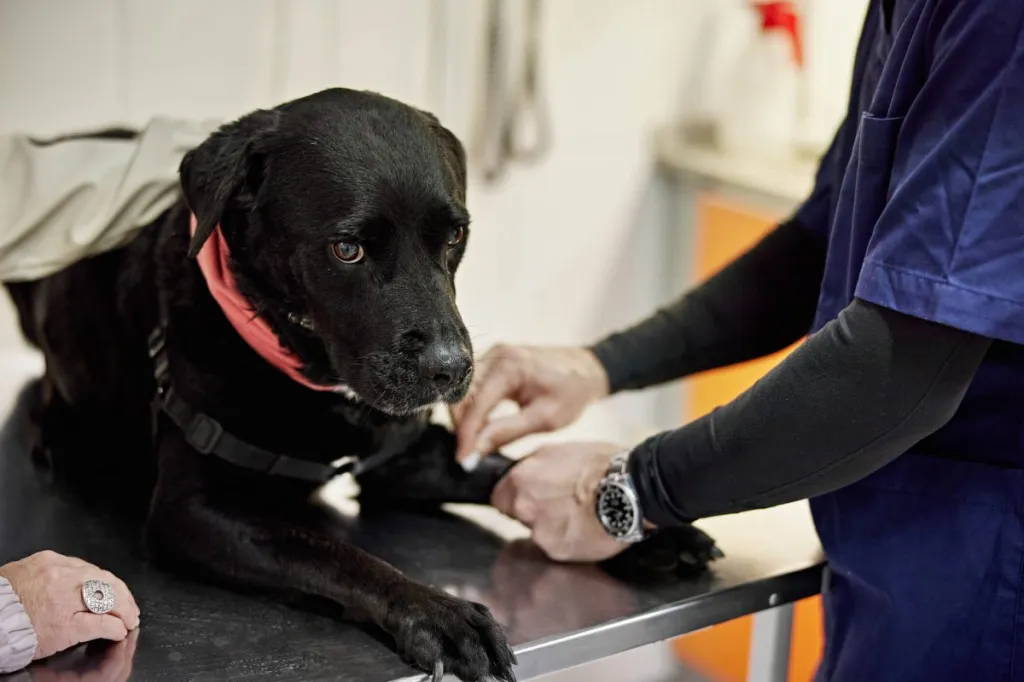Pompe sickness — additionally known as Glycogen Storage Sickness Variety II (GSD II) — is a unusual nonetheless vital metabolic dysfunction that impacts every folks and canine. It is named after the Dutch pathologist Joannes Cassianus Pompe, who first described the state of affairs in 1932 after observing its outcomes on infants. This dysfunction is introduced on by a deficiency of the enzyme acid alpha-glucosidase (GAA), which is crucial for breaking down glycogen into glucose inside lysosomes. When GAA is poor or absent, glycogen accumulates in assorted tissues, notably in muscle cells, leading to progressive muscle weak spot and totally different systemic issues.
Proper right here’s what it’s best to know regarding the indicators, causes, and coverings of the state of affairs.
Indicators of Pompe sickness in canine

The indicators of Pompe sickness in canine can differ broadly counting on the age of onset, the severity of enzyme deficiency, and the pace at which glycogen builds up in assorted tissues. On the entire, GSD II can present in two varieties: juvenile-onset and adult-onset.
- Juvenile-onset form: Puppies may current indicators as early as plenty of weeks to months of age. Widespread indicators embrace generalized muscle weak spot, challenge swallowing, and poor progress. This kind progresses shortly and may end in excessive respiratory distress and cardiac factors.
- Grownup-onset form: Canine couldn’t current indicators until later in life, usually between two and 5 years of age. Affected canine may exhibit indicators of prepare intolerance, muscle weak spot, stiffness, and a gradual decline in mobility. In distinction to the juvenile form, the event is normally slower nonetheless can nonetheless be debilitating over time.
Juvenile-onset circumstances normally have a poorer prognosis attributable to speedy sickness improvement and the early onset of life-threatening indicators. With out treatment, affected canine may keep solely as a lot as two years. In distinction, adult-onset circumstances may have a relatively greater prognosis nonetheless nonetheless face important challenges related to muscle weak spot and mobility factors. Attributable to this truth, early prognosis and a whole administration plan are vital for bettering the usual of life and lengthening the lifespan of canine with Pompe sickness.
Causes of Pompe sickness in canine

The underlying mechanism of Pompe’s sickness in canine mirrors that in folks. Lysosomes, which act as a result of the cell recycling amenities, rely upon GAA to interrupt down glycogen. In canine affected by GSD II, a mutation inside the gene coding for GAA impairs this course of. The following glycogen buildup occurs predominantly in muscle cells, along with skeletal and cardiac muscular tissues, which might be extraordinarily reliant on surroundings pleasant energy manufacturing. Over time, the excess glycogen disrupts common cell options, ensuing within the degeneration and dying of affected cells.
Pompe sickness is inherited in an autosomal recessive methodology. Due to this a canine ought to inherit two copies of the defective gene — one from each guardian — to develop the sickness. Canine who inherit only one defective gene are considered carriers and do not normally current indicators. However, they’ll transfer the gene to their offspring.
Whereas Pompe’s sickness can doubtlessly affect any breed, certain breeds appear to be at bigger risk attributable to genetic predispositions. These embrace:
In case you occur to suspect your canine may be affected, the 1st step is to hunt the recommendation of your vet. You’ll must concentrate on any unusual indicators you’ve noticed, much like vomiting, fatigue, or challenge respiration. Your vet will initially conduct a bodily examination and overview your canine’s medical historic previous to rule out additional widespread conditions which may present with comparable indicators.
To confirm the prognosis, your vet may advocate blood exams to measure the levels of certain enzymes, significantly GAA, which is poor in canine with Pompe sickness. Genetic testing may current extra affirmation by determining mutations inside the GAA gene. In some circumstances, muscle biopsies is more likely to be carried out to judge the extent of glycogen accumulation inside the muscle tissues.
Therapies for Pompe sickness in canine

Presently, there is not a treatment for Pompe sickness, and treatment is primarily supportive and symptomatic. The purpose is to boost the usual of life and lengthen the survival of affected canine. Some treatment decisions for Pompe sickness embrace:
- Enzyme various treatment (ERT): ERT is a promising treatment that entails administering a synthetic kind of the GAA enzyme. Though ERT has confirmed some success in folks, its software program in veterinary remedy stays to be beneath evaluation and enchancment.
- Bodily treatment: Frequent bodily treatment could assist hold muscle carry out and delay the event of muscle weak spot. Tailored prepare packages should be supervised by a vet or a veterinary physiotherapist.
- Medication: Anti-inflammatory drugs, bronchodilators, and cardiac medicines may be prescribed to deal with secondary issues associated to Pompe’s sickness.
- Respiratory help: In superior circumstances, canine may require respiratory help, much like oxygen treatment or mechanical air move, notably if respiratory muscular tissues are significantly weakened.
- Dietary administration: Right weight reduction plan and dietary help could assist deal with indicators and improve complete nicely being. A weight reduction plan low in superior carbohydrates may be helpful to reduce the buildup of glycogen.
Supplied that Pompe sickness is an autosomal recessive dysfunction, accountable breeding practices are vital to cease its propagation. Genetic counseling could assist breeders understand the possibility of passing the sickness to offspring. DNA testing should be used to find out carriers and make educated breeding alternatives, ultimately reducing the prevalence of this debilitating state of affairs in future generations.
